3 Star Rating
History of the Breathe Right Nasal Strip
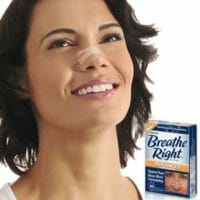 Nasal strips, commonly marketed under the brand “Breathe Right” have been sold worldwide since 1992 and have quickly gained popularity as NFL players were the first to endorse this product. Bruce Johnson, the inventor behind the Breathe Right dilator strips, created this product while in search of relief from his own sinus issues. Bruce suffered from chronic allergies and a deviated septum. One night in 1988 the idea of a drug-free nasal strip came to mind and he decided to further develop the concept. By 1991 his product was ready to launch and in 1992 it hit the ground running. Since then, Breathe Right has been a popular choice among sinus suffers.
Nasal strips, commonly marketed under the brand “Breathe Right” have been sold worldwide since 1992 and have quickly gained popularity as NFL players were the first to endorse this product. Bruce Johnson, the inventor behind the Breathe Right dilator strips, created this product while in search of relief from his own sinus issues. Bruce suffered from chronic allergies and a deviated septum. One night in 1988 the idea of a drug-free nasal strip came to mind and he decided to further develop the concept. By 1991 his product was ready to launch and in 1992 it hit the ground running. Since then, Breathe Right has been a popular choice among sinus suffers.
How do they work?
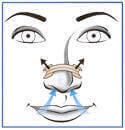 On the surface, nasal strips have a Band-Aid-like appearance. However, they serve a completely different and unique purpose. They work by physically lifting the skin in key areas where your sinuses are located. A flexible strip spans across the bridge of the nose which enables a “lifting” action. The outer edges contains a strong yet gentle adhesive which grabs a hold of your skin as the flexible strip lifts upward. This lifting action is often enough to help open inflamed sinus passages and make breathing much easier. It can provide relief for those with colds, a deviated septum, allergies, or a number of other conditions which cause sinus inflammation. Since the adhesive does not stick to oily skin very well, it’s important to wash your face prior to use in order to ensure that the product sticks to your nose and is effective.
On the surface, nasal strips have a Band-Aid-like appearance. However, they serve a completely different and unique purpose. They work by physically lifting the skin in key areas where your sinuses are located. A flexible strip spans across the bridge of the nose which enables a “lifting” action. The outer edges contains a strong yet gentle adhesive which grabs a hold of your skin as the flexible strip lifts upward. This lifting action is often enough to help open inflamed sinus passages and make breathing much easier. It can provide relief for those with colds, a deviated septum, allergies, or a number of other conditions which cause sinus inflammation. Since the adhesive does not stick to oily skin very well, it’s important to wash your face prior to use in order to ensure that the product sticks to your nose and is effective.
Do they really help to stop snoring?
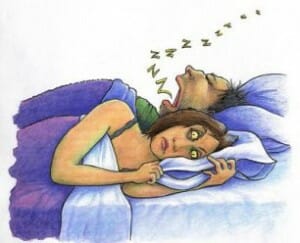 If you were to search the internet for nasal strip testimonials from snoring suffers you will likely receive a number of mixed responses. Why do nasal strips help some who snore yet do not work for others? The answer has a lot to do with the source of one’s snoring. For some, restricted nasal passages are the core issue when it comes to snoring. For these people, nasal strips may provide an effective solution when it comes to preventing snoring. While nasal or sinus issues are sometimes the cause of snoring, the most common source of snoring originates from the back of one’s throat in the soft palate area of the airway. This area consists of muscles and soft tissue which typically relax and become loose while asleep. These loose tissues have a tendency to flop around and vibrate against surrounding tissues in the throat. The colliding of tissues creates the sound of snoring that most of us are familiar with. In some cases, this tissue becomes so relaxed that it causes a complete blockage of the airway and breathing stops completely for several seconds or even minutes. This condition is referred to as sleep apnea and should be diagnosed and treated by a medical professional promptly as it can lead to serious health condition such as high blood pressure or stroke.
If you were to search the internet for nasal strip testimonials from snoring suffers you will likely receive a number of mixed responses. Why do nasal strips help some who snore yet do not work for others? The answer has a lot to do with the source of one’s snoring. For some, restricted nasal passages are the core issue when it comes to snoring. For these people, nasal strips may provide an effective solution when it comes to preventing snoring. While nasal or sinus issues are sometimes the cause of snoring, the most common source of snoring originates from the back of one’s throat in the soft palate area of the airway. This area consists of muscles and soft tissue which typically relax and become loose while asleep. These loose tissues have a tendency to flop around and vibrate against surrounding tissues in the throat. The colliding of tissues creates the sound of snoring that most of us are familiar with. In some cases, this tissue becomes so relaxed that it causes a complete blockage of the airway and breathing stops completely for several seconds or even minutes. This condition is referred to as sleep apnea and should be diagnosed and treated by a medical professional promptly as it can lead to serious health condition such as high blood pressure or stroke.
Mouthpieces as an alternative
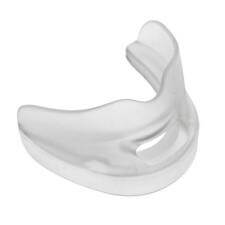 For those who have a snoring condition originating from the soft palate area, nasal strips will not be at all effective. In order to get results, it’s necessary to address the core issue. The Mandibular Advancement Device (MAD), more commonly referred to as a “snoring mouthpiece” has been proven to treat snoring from its point of origin. As its name implies, the MAD hold the jaw (mandible) in a forward (advanced) position. By holding forward the jaw, muscles in the throat are stretched and loose tissues are tightened. Once tightened, tissues are no longer able to flap against each other and the sound of snoring is typically eliminated. MAD’s have been used by medical professionals since the 1980’s and numerous studies have proven them to be quite effective when it comes to stopping the sounds associated with snoring.
For those who have a snoring condition originating from the soft palate area, nasal strips will not be at all effective. In order to get results, it’s necessary to address the core issue. The Mandibular Advancement Device (MAD), more commonly referred to as a “snoring mouthpiece” has been proven to treat snoring from its point of origin. As its name implies, the MAD hold the jaw (mandible) in a forward (advanced) position. By holding forward the jaw, muscles in the throat are stretched and loose tissues are tightened. Once tightened, tissues are no longer able to flap against each other and the sound of snoring is typically eliminated. MAD’s have been used by medical professionals since the 1980’s and numerous studies have proven them to be quite effective when it comes to stopping the sounds associated with snoring.
There are two types of snoring mouthpieces – over the counter and professionally fitted. For years, your dentist was the only person who could issue a MAD. Today, there is huge selection of over the counter products from a number of manufacturers which can be purchased at a fraction of the price of professionally fitted devices. Most OTC products are constructed from a thermoplastic material that can be molded using hot water. Professionally fitted mouthpieces typically cost over $1,000 while the OTC versions commonly sold on the internet typically sell for around $100 or less.
Snoring mouthpiece vs Breath Right strips: Cost comparison
 Breath Right strips usually come in packs of 10-30 and typically cost just under $.50 per unit. They are disposable and can only be used for one night each. Snoring mouthpieces have a useful life of anywhere from a few months to a couple of years. Most mouthpieces last for at least a year on average when properly cared for. A good quality mouthpiece costs around $70 – $100 and can be reused every night. Over the course of a year, disposable nasal strips cost approximately $182 if used every night. In comparison, a mouthpiece that lasts a year costs between $70 – $100. The mouthpiece obviously offers a long-term savings advantage in comparison to nasal strips.
Breath Right strips usually come in packs of 10-30 and typically cost just under $.50 per unit. They are disposable and can only be used for one night each. Snoring mouthpieces have a useful life of anywhere from a few months to a couple of years. Most mouthpieces last for at least a year on average when properly cared for. A good quality mouthpiece costs around $70 – $100 and can be reused every night. Over the course of a year, disposable nasal strips cost approximately $182 if used every night. In comparison, a mouthpiece that lasts a year costs between $70 – $100. The mouthpiece obviously offers a long-term savings advantage in comparison to nasal strips.
Keep in mind that there is a huge difference in mechanics between the two devices. A nasal snorer will not find relief from a mouthpiece while those with snoring issues originating from the soft palate will not find relief from nasal strips.
Should I try Breathe Right strips for my snoring?
 As mentioned, snoring more commonly originates in the soft palate region and not necessarily the nasal passages. However, in some cases, a simple nasal strip may be an effective solution. Breathe Right strips are a bit less expensive (at first) in comparison to a mouthpiece and could provide relief. If you believe that sinuses are the cause of your snoring problem then nasal strips may be worth a try. These can be purchased at any drug store and most supermarkets.
As mentioned, snoring more commonly originates in the soft palate region and not necessarily the nasal passages. However, in some cases, a simple nasal strip may be an effective solution. Breathe Right strips are a bit less expensive (at first) in comparison to a mouthpiece and could provide relief. If you believe that sinuses are the cause of your snoring problem then nasal strips may be worth a try. These can be purchased at any drug store and most supermarkets.
However, in most cases, nasal strips provide little to no relief if the sound of snoring originates from the most common area which is the soft palate. For this type of snoring a mouthpiece made for snoring will likely be a better-suited solution. They are not typically sold in stores but can be purchased online.
SleepTight Mouthpiece – A Better Choice For Snoring
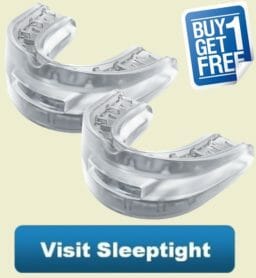 There are over two dozen do-it-yourself mouthpieces to choose from. Some have special features while others are quite simple. The “SleepTight” is a product that I have tried and can recommend because it has several desirable features at a reasonable price.
There are over two dozen do-it-yourself mouthpieces to choose from. Some have special features while others are quite simple. The “SleepTight” is a product that I have tried and can recommend because it has several desirable features at a reasonable price.
Its most notable features include a larger air hole at the front and grooves that are incorporated into the tray which helps to create a tighter fit. For mouth breathers, an opening that provides adequate airflow is necessary and the SleepTight has the largest opening that I have seen in a mouthpiece.
It’s a great choice for those who tend to breathe through their mouth while sleeping or those with allergies, sinus issues, colds, a deviated septum or who have consumed excessive alcohol. The SleepTight was designed by a seasoned dentist with over 30 years of experience. Here are a few key points to consider:
- Created By Dr. Michael Williams
- FDA Cleared
- Extra Large Breather Hole
- Solid 1 Piece Design
- Custom Molds To Your Mouth In Less Than 5 Mins
- BPA & Latex-free
- Comes With A 30 Day Guarantee
- Exclusive Buy 1 Get 1 Free Offer to Snoring MouthPiece Guide Readers
- 2 for $88 Including Shipping (Must Click On “Visit SleepTight” Before Ordering)
Read my complete review of the SleepTight.
Which mouthpiece should I buy?
The anti-snoring mouthpiece is one of the most highly effective stop snoring solutions available. With over 100 different products to choose from, deciding which one to buy can be challenging.
As a snorer and product reviewer, I have tried many of these devices and created a list of recommended devices that will help to make this decision much easier.
Share This Post: